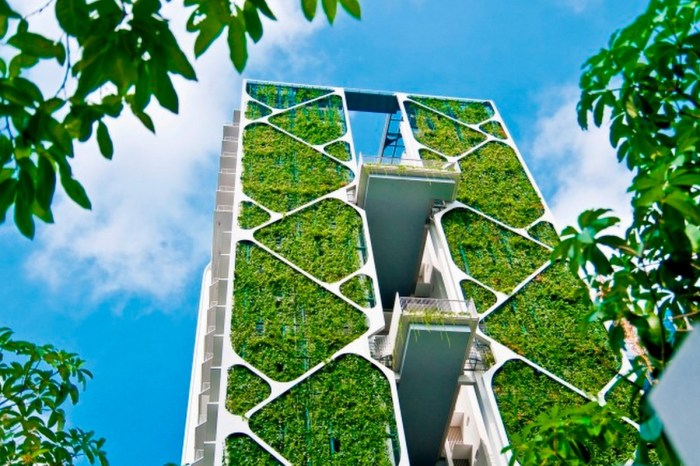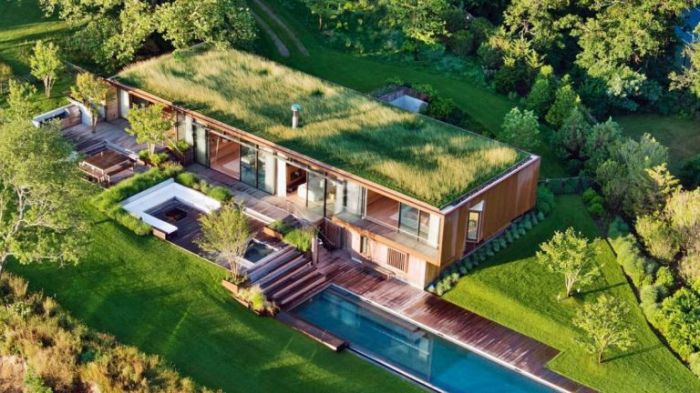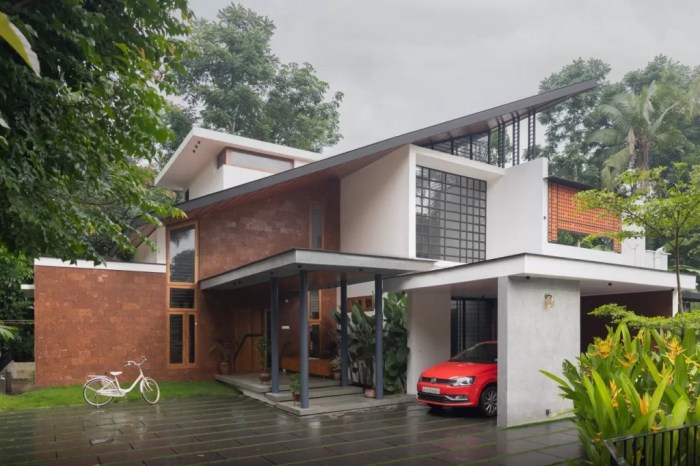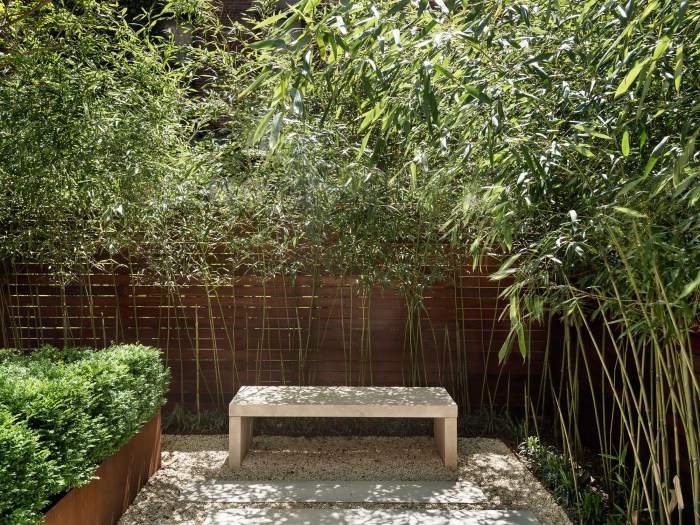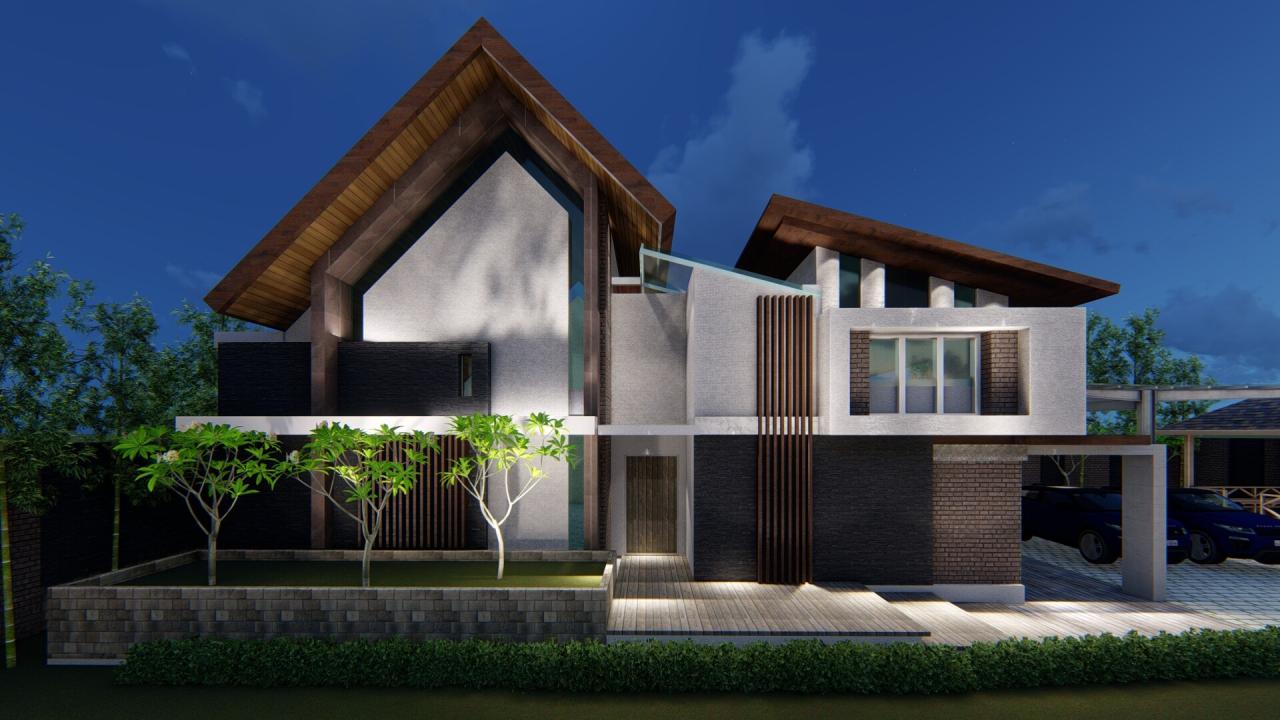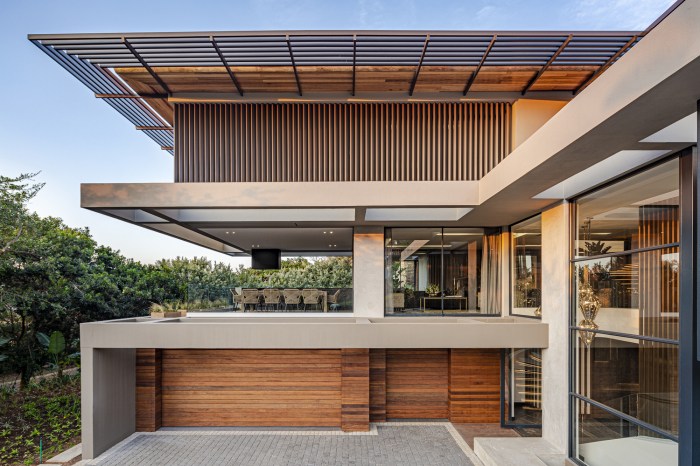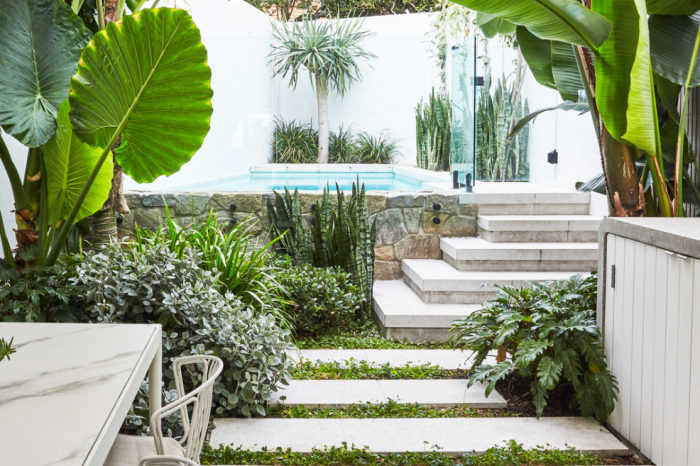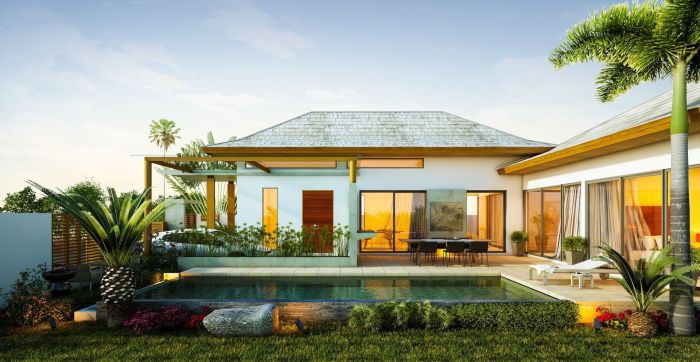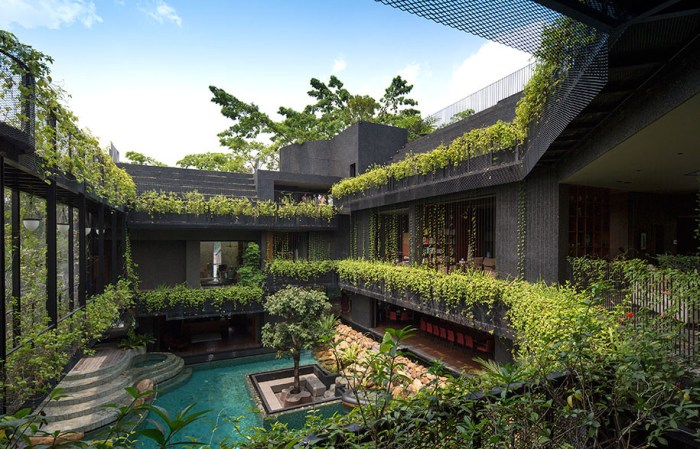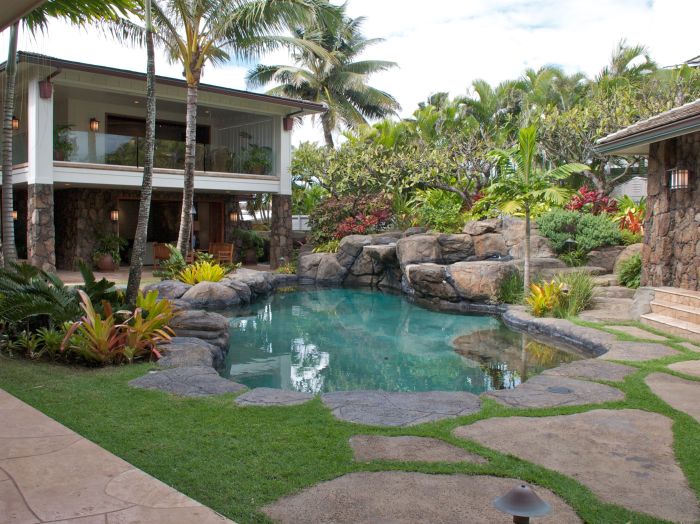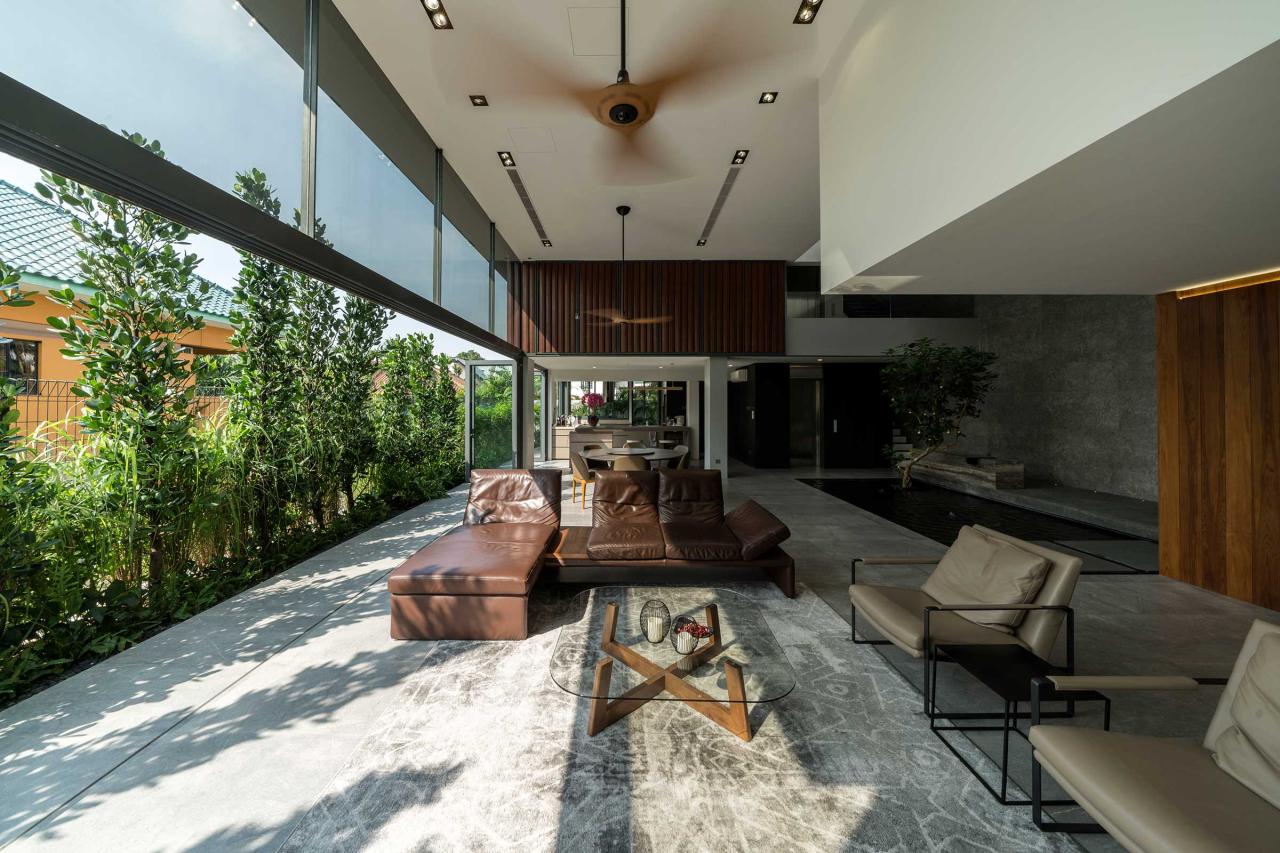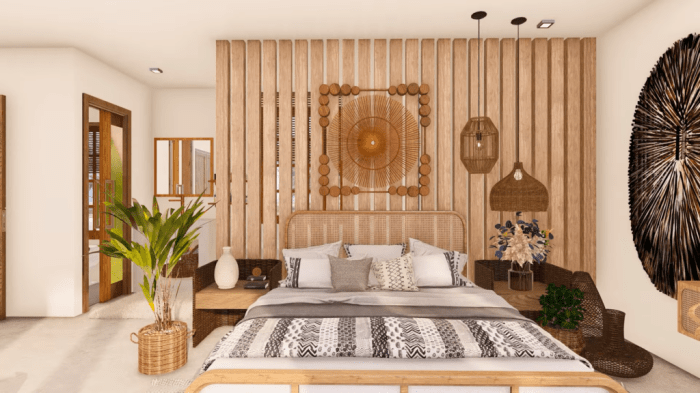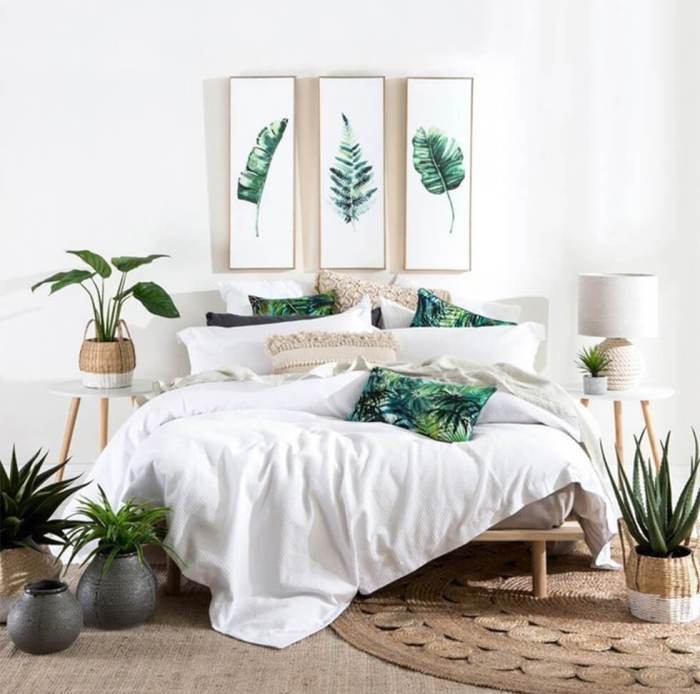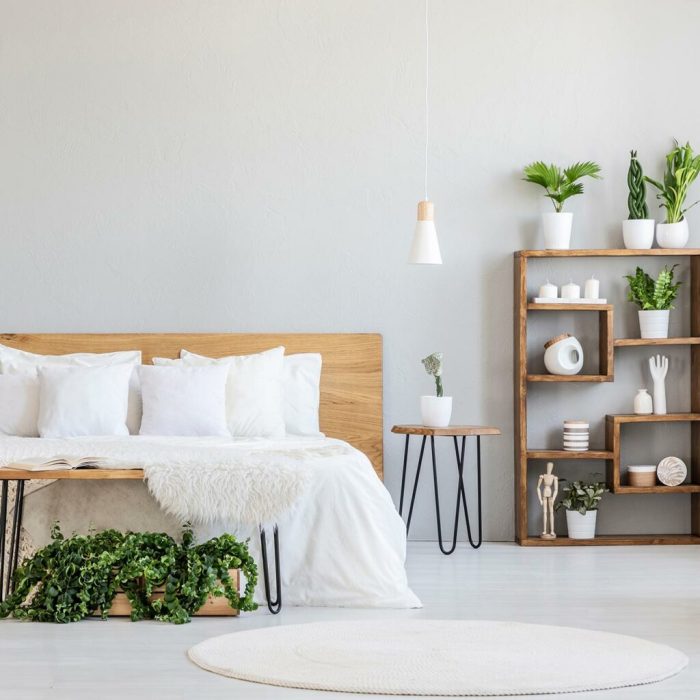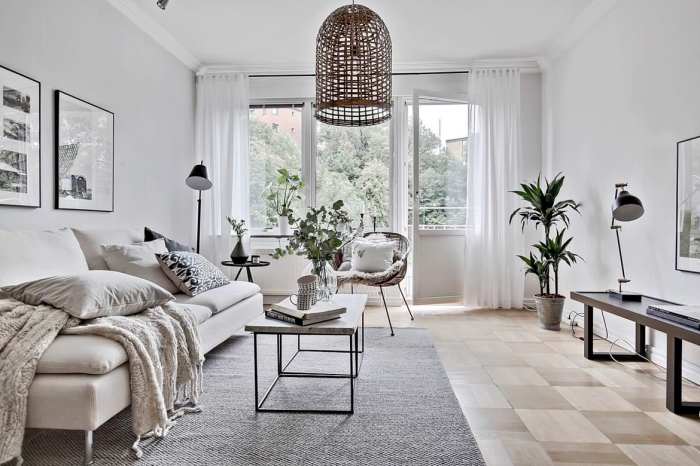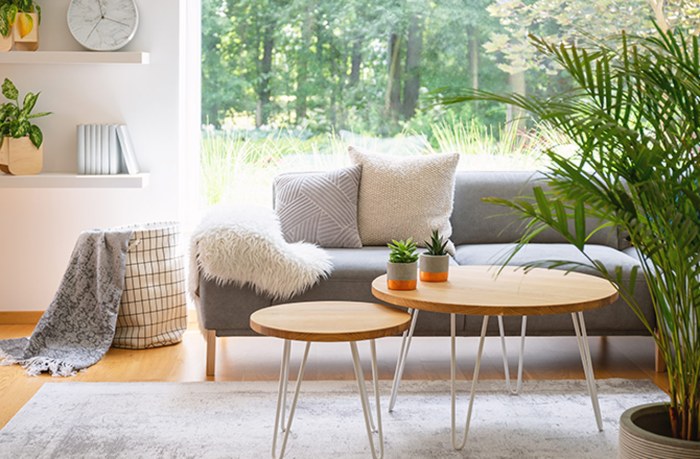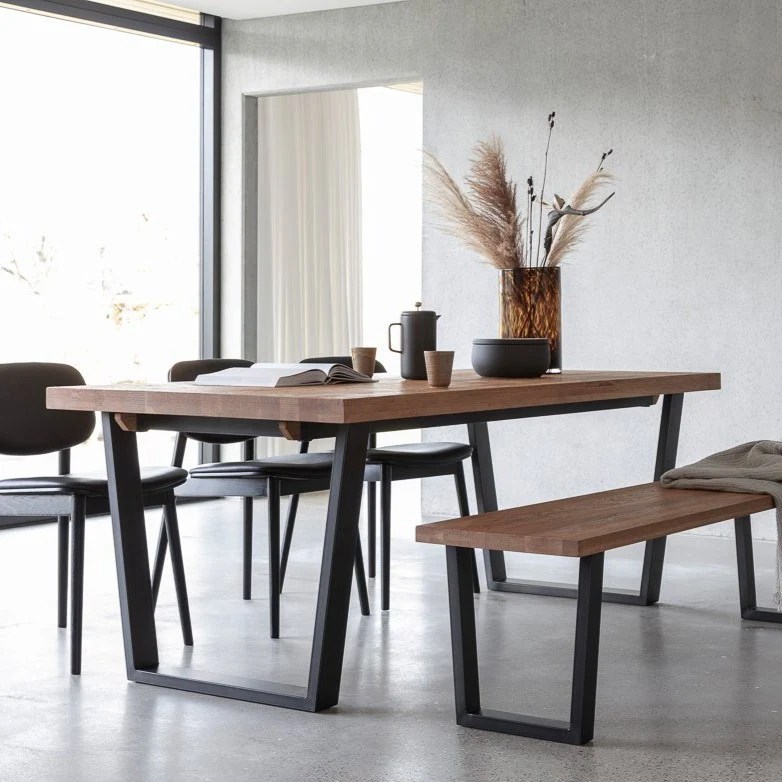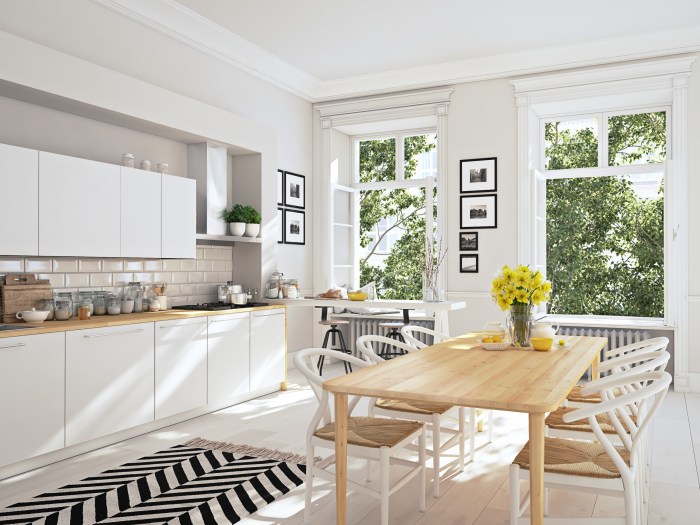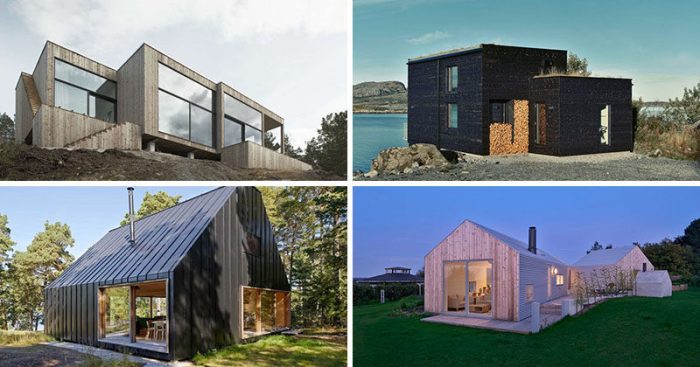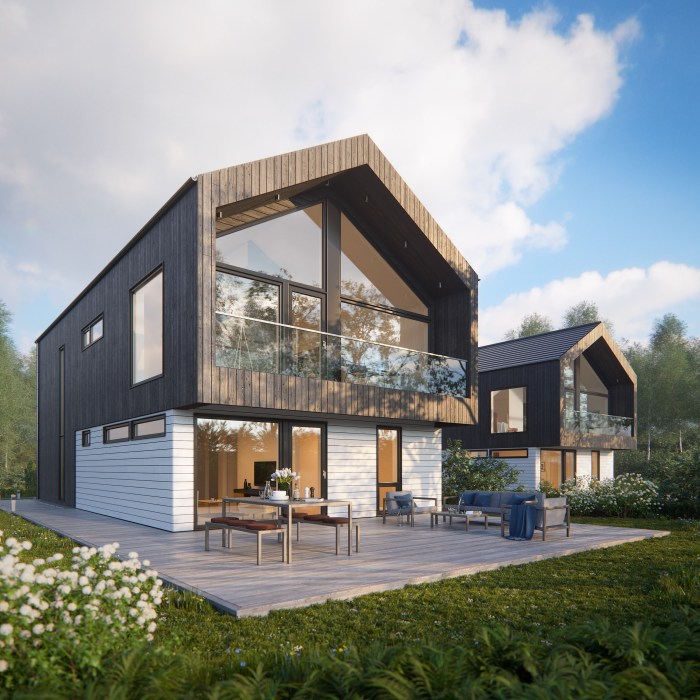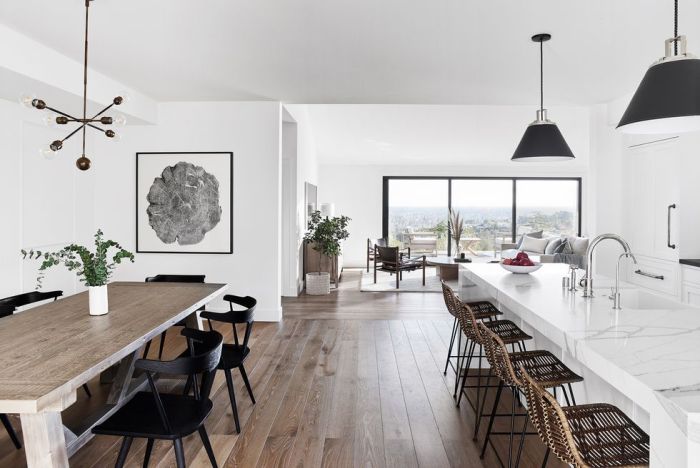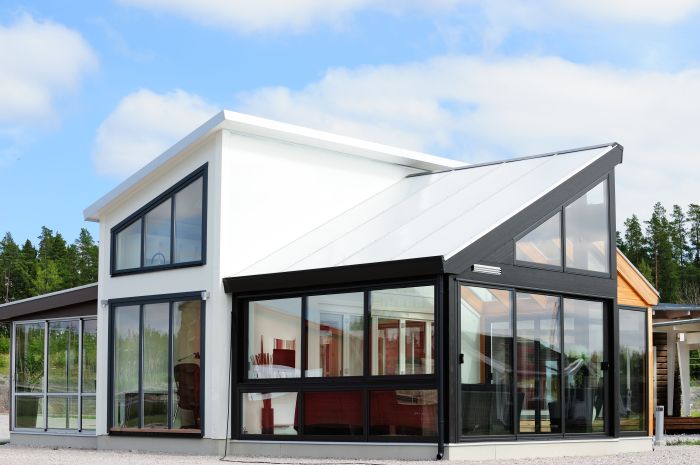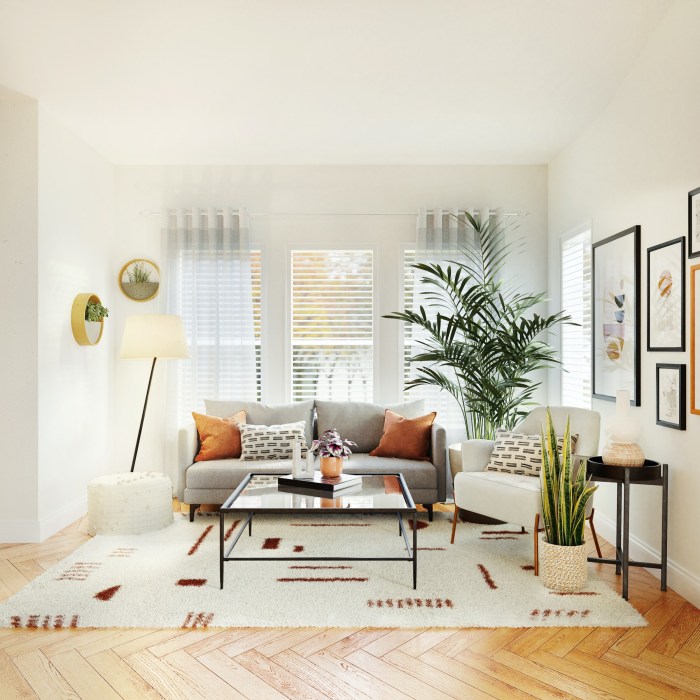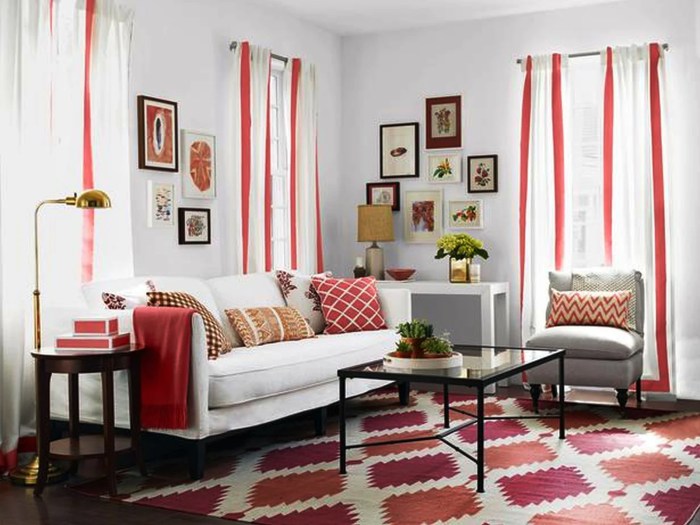Imagine a space where the raw, utilitarian aesthetic of industrial design meets the vibrant, lush energy of the tropics. This is the essence of the Tropical Industrial interior style—a captivating blend of contrasting elements that creates a uniquely inviting and sophisticated atmosphere. This design approach leverages the inherent strengths of both styles, marrying the cool, metallic tones and exposed structural elements of industrial design with the warmth of natural materials and the vibrant colors of tropical flora.
The result is a space that is both strikingly modern and surprisingly comforting.
This exploration delves into the core principles of Tropical Industrial design, examining the careful selection of materials, the strategic use of color palettes and textures, and the thoughtful incorporation of furniture and lighting. We’ll explore how to seamlessly integrate tropical elements—from lush plants to natural fiber textiles—without sacrificing the inherent ruggedness of the industrial aesthetic. We will also consider the practical aspects of maintaining this unique style and discuss sustainable design practices that can be implemented to minimize environmental impact.
Defining “Tropical Industrial Interior” Style
The Tropical Industrial interior design style represents a fascinating juxtaposition of seemingly disparate aesthetics: the raw, utilitarian elements of industrial design and the warm, organic textures of tropical environments. This fusion creates spaces that are both sophisticated and inviting, blending the sleekness of metal with the richness of natural materials. The style achieves a balance, preventing either aesthetic from dominating, instead creating a harmonious and unique atmosphere.
The core elements of this style are readily identifiable. Industrial design’s hallmarks—exposed brick or concrete, metal pipes and beams, and a palette of greys and blacks—are softened and counterpointed by tropical influences. These include the incorporation of natural wood, rattan, bamboo, and lush greenery, creating a vibrant and texturally rich environment. The overall effect is a space that feels both modern and relaxed, rugged yet refined.
Comparison with Other Interior Design Styles
The Tropical Industrial style differs significantly from its parent styles. Pure industrial design often prioritizes a stark, minimalist aesthetic, focusing on functionality and exposed structure. While it may incorporate metal and concrete, it lacks the warmth and organic elements found in Tropical Industrial design. Conversely, tropical design emphasizes natural materials and vibrant colors, often lacking the raw, industrial textures.
Minimalist design, with its emphasis on clean lines and simplicity, would exclude the textural complexity inherent in Tropical Industrial style. The key difference lies in the deliberate blending of contrasting elements, creating a dynamic and layered aesthetic not found in any of the individual styles.
Key Materials Used in Tropical Industrial Design
The material palette of a Tropical Industrial interior is a critical component of its success. The juxtaposition of materials is key. The strength and solidity of concrete and metal are balanced by the warmth and softness of natural wood and woven fibers. This contrast generates visual interest and a sense of depth. Concrete, for instance, might form the base of a floor or wall, while reclaimed wood beams add a rustic charm.
Metal accents, such as industrial lighting fixtures or furniture legs, introduce a sleek, modern touch. Natural fibers, like rattan or jute, bring in textural softness and a tropical feel, often used in furniture or decorative elements.
| Material | Source | Texture | Color Palette |
|---|---|---|---|
| Reclaimed Wood | Demolished buildings, forests | Rough, smooth, weathered | Browns, greys, natural tones |
| Steel | Manufacturing, recycled materials | Smooth, rough, oxidized | Greys, blacks, metallic accents |
| Concrete | Construction sites, precast elements | Smooth, textured, polished | Greys, off-whites, natural tones |
| Rattan | Rattan palm | Woven, pliable, flexible | Natural browns, tans, light beige |
Color Palettes and Textures
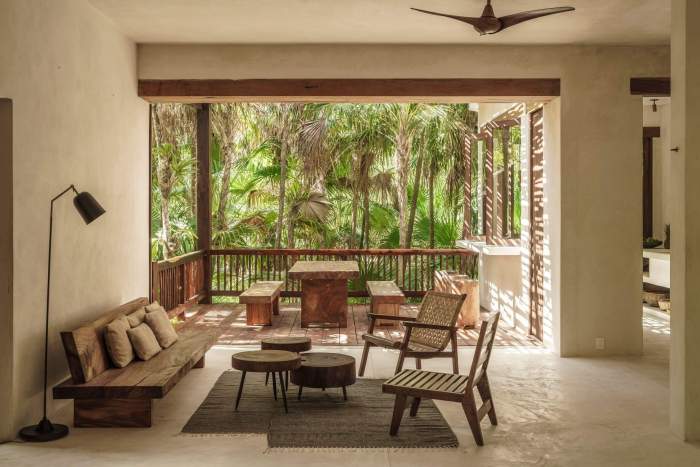
The successful implementation of a tropical industrial interior design hinges on a careful balance of contrasting elements. The juxtaposition of raw, industrial materials with the vibrant hues and organic textures of the tropics creates a dynamic and visually engaging space. This requires a nuanced understanding of color palettes and the strategic deployment of textures to achieve the desired aesthetic.The interplay of color and texture dictates the overall mood and atmosphere.
By strategically selecting color palettes that evoke the tropical landscape while incorporating the muted tones typical of industrial design, we can create a space that is both invigorating and sophisticated. Similarly, the strategic use of contrasting textures – rough against smooth, natural against man-made – adds depth and visual interest, preventing the design from feeling monotonous.
Tropical Industrial Color Palettes
Three distinct color palettes are proposed to capture the essence of a tropical industrial aesthetic. These palettes are designed to be adaptable, allowing for customization based on personal preference and the specific space.
- Palette 1: Sun-Drenched Concrete
-This palette evokes the warmth of a tropical sun against the cool neutrality of concrete. It features #F2E9E1 (a warm off-white), #A0522D (sienna, representing the earth), #808080 (gray, representing concrete), and #4682B4 (steel blue, representing metal accents). This combination creates a feeling of relaxed sophistication. - Palette 2: Jungle Oasis
-This palette captures the lushness of a tropical jungle with industrial undertones. It incorporates #90EE90 (light green, representing foliage), #2E8B57 (seagreen, representing deeper jungle shades), #556B2F (dark olive green, representing shadows), and #708090 (slate gray, representing metal and concrete). This palette is more subdued yet still vibrant. - Palette 3: Coastal Sunset
-This palette blends the fiery hues of a tropical sunset with the cool tones of the sea and industrial elements. The colors are #FFD700 (gold, representing sunset), #FFA500 (orange, representing sunset glow), #008080 (teal, representing the ocean), and #A9A9A9 (dark gray, representing industrial components). This palette is bold and energetic.
Texture Contrast: Rough and Smooth
The successful execution of a tropical industrial interior hinges on the strategic use of contrasting textures. The inherent roughness of industrial materials, such as exposed brick or weathered wood, provides a compelling counterpoint to the smooth, polished surfaces often associated with modern design. This contrast creates visual interest and prevents the space from feeling sterile or overly polished.The interplay of these contrasting textures adds depth and complexity to the design.
The tactile experience is as important as the visual, encouraging interaction and exploration. This juxtaposition of textures mirrors the natural world, where smooth river stones contrast with the rough bark of trees, creating a harmonious yet dynamic environment.
Texture Integration Examples
The integration of contrasting textures can be achieved through a variety of materials.
- Woven Fabrics: Natural fibers like jute, sisal, or bamboo can introduce warmth and texture, softening the harshness of industrial elements. Imagine a jute rug placed on a polished concrete floor, or bamboo blinds filtering light through large factory windows.
- Polished Concrete: This material offers a smooth, sleek surface that provides a stark contrast to rougher elements. A polished concrete floor can be juxtaposed with a rough-hewn wooden coffee table or exposed brick wall.
- Rough-Hewn Wood: Reclaimed wood beams or furniture pieces with a rustic finish introduce a natural, organic texture. The knots, cracks, and imperfections in the wood add character and visual interest, balancing the clean lines of industrial design. Consider a rough-hewn wooden dining table paired with sleek metal chairs.
- Metal Accents: The smooth, cool surfaces of metal pipes, shelving units, or light fixtures provide a counterpoint to the warmth of wood and the roughness of brick. The reflective quality of polished metal also adds to the visual interest.
Mood Board Description
The mood board showcases the three color palettes described above, each represented by swatches of the specified hex codes. Alongside these color swatches are textural representations. For Palette 1 (Sun-Drenched Concrete), we see a smooth, light gray concrete sample contrasted with a rough-hewn piece of sienna-colored wood. Palette 2 (Jungle Oasis) is represented by samples of various shades of green fabric, evoking lush foliage, alongside a piece of slate gray metal.
Finally, Palette 3 (Coastal Sunset) shows swatches of gold, orange, and teal fabrics, with a dark gray metal accent representing the industrial aspect. The overall mood board aims to demonstrate the successful blending of warm tropical tones and cool industrial elements, highlighting the interplay of contrasting textures.
Furniture and Lighting Choices
The successful integration of furniture and lighting is paramount in achieving the desired aesthetic and functionality of a tropical industrial interior. This style necessitates a careful balance between rugged industrial elements and the relaxed, natural feel of a tropical environment. The chosen pieces should reflect this duality, incorporating materials and designs that evoke both worlds. Careful consideration of light sources is equally crucial, as lighting plays a pivotal role in shaping the atmosphere and highlighting the unique features of the space.The selection of furniture should prioritize both form and function, reflecting the inherent contradictions of the tropical industrial style.
Pieces should be durable and robust, reflecting the industrial aesthetic, while simultaneously incorporating natural materials and softer lines that evoke the tropical atmosphere. This juxtaposition creates a visually interesting and comfortable space. The use of light and shadow, expertly manipulated through lighting design, further enhances this interplay.
Furniture Selection for Tropical Industrial Interiors
The furniture chosen for a tropical industrial space should be a blend of rugged durability and natural beauty. Metals, particularly aged steel or iron with a rusted patina, are key elements. These can be paired with natural wood, such as reclaimed teak or mango wood, to soften the industrial edge and introduce the warmth of the tropics. Upholstery should ideally incorporate natural fabrics like linen or cotton in earthy tones, creating a comfortable and inviting atmosphere.
The overall effect should be one of deliberate contrast, showcasing the inherent tension between the two design styles.
- Reclaimed wood coffee table: A large, rustic coffee table made from reclaimed teak or mango wood, featuring a metal base with visible welds for an industrial touch. The wood’s natural grain and imperfections would be a striking contrast to the smooth, cold metal.
- Metal and leather armchair: A comfortable armchair with a metal frame and distressed leather upholstery. The leather’s patina would add to the vintage industrial feel, while the metal frame provides a sturdy and visually interesting element.
- Wicker pendant lights: Wicker pendant lights add a touch of natural texture and tropical warmth, complementing the metal and wood elements.
Lighting Design to Enhance Ambiance
Lighting is critical in establishing the desired mood within a tropical industrial interior. The goal is to create a layered lighting scheme that combines ambient, task, and accent lighting to highlight textures and features, while simultaneously fostering a relaxed and inviting atmosphere. Ambient lighting provides overall illumination, while task lighting focuses on specific areas like reading nooks or workspaces.
Accent lighting highlights specific features, such as artwork or architectural details, adding depth and visual interest. The interplay of these different light sources is key to creating a dynamic and engaging space. The use of warmer color temperatures in lighting fixtures contributes to the tropical ambiance. For instance, incandescent bulbs or LED bulbs with a warm white color temperature (2700K-3000K) will create a cozy and inviting atmosphere, contrasting with the cooler tones of the industrial elements.
Comparative Analysis of Lighting Options
Pendant lights, often crafted from metal or woven materials, can serve as both functional and stylistic elements. Their vertical orientation draws the eye upward, creating a sense of spaciousness. Track lighting offers flexibility, allowing for targeted illumination of specific areas or artwork. Ambient lighting, encompassing elements like recessed lighting or floor lamps, provides a softer, more diffuse illumination, complementing the other light sources.
The strategic use of all three lighting types—pendant, track, and ambient—creates a layered and dynamic lighting scheme.
- Pendant Lights: These can be made from various materials, including metal cages, industrial-style bulbs in exposed wiring, or even repurposed factory lights for a distinctly industrial feel. Alternatively, woven rattan or bamboo pendants can introduce a tropical element. The choice depends on the desired balance between industrial and tropical aesthetics.
- Track Lighting: Track lighting systems offer flexibility in directing light to specific areas. This is particularly useful for highlighting artwork or architectural features, allowing for a customized lighting plan. The tracks themselves can be integrated into the industrial aesthetic through the use of exposed metal conduits.
- Ambient Lighting: Recessed lighting in the ceiling provides a base level of illumination, while strategically placed floor lamps or table lamps offer additional warmth and ambiance. The use of warm-toned bulbs is crucial in creating the desired tropical atmosphere.
Incorporating Tropical Elements
The juxtaposition of tropical vibrancy and industrial ruggedness presents a unique design challenge. Successfully integrating these seemingly disparate styles requires a nuanced approach, focusing on careful selection and placement of tropical elements to complement, not overwhelm, the industrial aesthetic. The key lies in achieving a balance that respects the inherent qualities of both styles, creating a space that is both visually stimulating and harmoniously unified.The successful integration of tropical elements into an industrial interior hinges on understanding the principles of both design styles.
Industrial design emphasizes raw materials, exposed structures, and a utilitarian aesthetic. Tropical design, conversely, evokes feelings of warmth, lushness, and vibrant color. The challenge is to bridge this gap, using the tropical elements as accents that enrich the industrial base, rather than competing with it.
Methods for Incorporating Tropical Elements
Strategic incorporation of tropical elements can significantly enhance an industrial space. Plants, natural materials like bamboo and rattan, and patterns inspired by tropical flora and fauna can effectively introduce a sense of warmth and life. However, it’s crucial to maintain a sense of proportion and avoid overwhelming the industrial aesthetic. For example, a single, statement-making potted fiddle-leaf fig can add a significant tropical touch without detracting from the overall industrial feel, whereas a profusion of smaller plants might appear cluttered.
Similarly, incorporating tropical patterns through textiles such as throw pillows or rugs can introduce color and texture without disrupting the industrial lines and materials. The use of natural materials, such as a bamboo coffee table or rattan pendant lights, can further enhance the tropical theme while maintaining a cohesive design language. The goal is to create a layered effect, where the tropical elements subtly enhance the industrial foundation.
Balancing Ruggedness and Vibrancy
The contrast between the rough textures of industrial design (exposed brick, metal pipes) and the smooth, often vibrant textures of tropical elements (lush foliage, polished wood) is a key design element. This contrast can be exploited to create visual interest and depth. For instance, the coolness of exposed metal pipes can be beautifully offset by the warmth of a woven rattan chair or the vibrant green of a large potted plant.
The key is to use the tropical elements as visual punctuation marks, strategically placed to highlight and enhance the industrial features rather than compete with them. Consider the color palette: muted industrial tones can be complemented with pops of tropical color through carefully chosen accessories, such as a brightly colored throw blanket or a piece of artwork featuring tropical birds.
This approach ensures that the tropical elements add vibrancy without overpowering the industrial aesthetic’s inherent simplicity and functionality.
Incorporating Tropical Plants
The strategic placement and selection of tropical plants are paramount. Larger plants, such as a Bird of Paradise or a Kentia Palm, can act as architectural elements, defining spaces and adding verticality. These should be strategically positioned to complement the industrial features, perhaps nestled beside a metal shelving unit or in a corner near an exposed brick wall.
Smaller plants, like orchids or bromeliads, can be used as accents on shelves or tables, adding pops of color and texture. Variety in plant types, shapes, and sizes is key to creating a visually interesting and dynamic space. Consider the light requirements of each plant when selecting locations; ensure sufficient natural or artificial light for optimal growth. The placement of plants should be intentional, avoiding a cluttered appearance and maintaining the clean lines associated with industrial design.
For example, grouping similar plants together in strategic locations, rather than scattering them randomly, creates a more visually cohesive look.
Living Room Design Concept
This living room concept integrates a polished concrete floor, exposed brick walls, and metal shelving units, establishing a strong industrial base. A large, statement-piece fiddle-leaf fig is placed in a corner, adding a significant tropical element. The exposed brick wall serves as a striking backdrop for the plant, creating a natural focal point. A woven rattan sofa and armchair introduce warmth and texture, balancing the coolness of the concrete floor and metal elements.
Throw pillows featuring tropical leaf patterns further enhance the theme, while maintaining a neutral color palette that avoids overwhelming the industrial aesthetic. Pendant lights made of reclaimed wood and metal combine both styles, adding a unique touch. A low, rectangular coffee table made of reclaimed wood provides a surface for accessories, while maintaining a clean, uncluttered aesthetic.
The overall effect is a space that seamlessly blends the ruggedness of industrial design with the vibrant energy of tropical elements, creating a sophisticated and inviting living room.
Practical Considerations and Sustainability
The inherent beauty of a tropical industrial interior style presents a unique set of challenges regarding maintenance and environmental responsibility. Balancing the aesthetic appeal of exposed metal, raw textures, and lush greenery with practical upkeep and sustainable practices is crucial for creating a space that is both visually stunning and environmentally conscious. This requires careful consideration of material choices, cleaning methods, and ongoing maintenance routines.
Maintaining a Tropical Industrial Interior
Maintaining a tropical industrial space necessitates a multifaceted approach. The robust nature of industrial elements, such as metal and concrete, simplifies cleaning; however, the inclusion of tropical plants introduces a different set of considerations. Regular dusting of exposed metal surfaces and occasional wiping with a damp cloth are sufficient for most industrial materials. Concrete floors, while durable, benefit from periodic sealing to prevent staining and maintain their integrity.
Plant care requires diligent attention. Regular watering, fertilization, and pest control are essential to maintain the vibrancy and health of the plants, contributing to the overall aesthetic. Proper pruning helps control growth and prevents overcrowding, which can lead to disease. For example, a weekly inspection of each plant, adjusting watering based on soil moisture and ambient humidity, and implementing a preventative pest control strategy (like introducing beneficial insects) will significantly reduce maintenance headaches and plant loss.
Sustainable Materials and Practices
The integration of sustainable materials and practices is paramount in creating an environmentally responsible tropical industrial interior. This involves selecting materials with low environmental impact, prioritizing recycled or reclaimed options, and implementing energy-efficient design choices. For example, using reclaimed wood for shelving or flooring significantly reduces the demand for newly harvested timber, lessening deforestation. Bamboo, a rapidly renewable resource, offers a sustainable alternative to traditional hardwoods.
Employing low-VOC (volatile organic compound) paints and finishes minimizes indoor air pollution. Selecting energy-efficient LED lighting significantly reduces energy consumption compared to traditional incandescent bulbs. The implementation of smart home technology, such as automated lighting and temperature control, further enhances energy efficiency.
Reclaimed and Recycled Materials
Incorporating reclaimed and recycled materials is a cornerstone of sustainable tropical industrial design. Reclaimed wood beams, salvaged metal pipes, and repurposed industrial components add character and authenticity while reducing waste. For instance, old factory windows can be repurposed as dividers or decorative elements, infusing the space with a unique history. Similarly, recycled metal sheets can be used to create custom shelving or wall accents, demonstrating both functionality and a commitment to sustainability.
These materials not only reduce environmental impact but also add a layer of unique texture and history to the design, enriching the overall aesthetic. The use of recycled glass for countertops or light fixtures further exemplifies the potential of reclaimed materials.
Eco-Friendly Furniture and Lighting Options
Choosing eco-friendly furniture and lighting is crucial for a sustainable tropical industrial design. Furniture made from sustainably harvested wood, bamboo, or recycled materials minimizes environmental impact. Look for furniture manufacturers committed to ethical sourcing and responsible production practices. For example, opting for furniture made from certified sustainable wood (FSC certified) guarantees that the wood comes from responsibly managed forests.
Similarly, LED lighting offers significant energy savings compared to traditional options. Moreover, LED lights are available in a wide range of styles, ensuring compatibility with the industrial aesthetic. Consider using recycled metal or reclaimed wood in custom-made lighting fixtures to further enhance the sustainable aspect of the design. Choosing furniture with a long lifespan also reduces the frequency of replacements, thus minimizing waste.
Final Thoughts
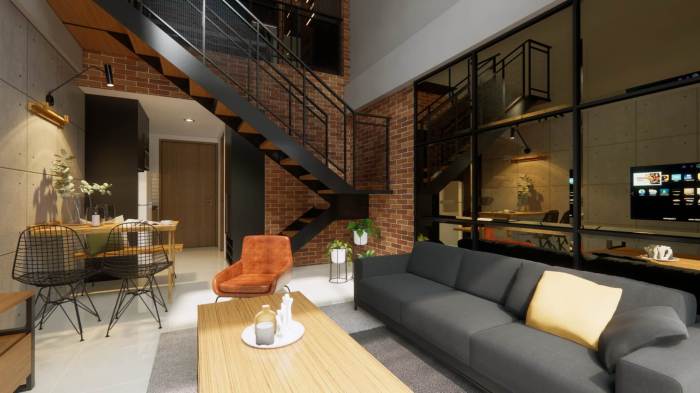
The Tropical Industrial interior style offers a refreshing alternative to conventional design paradigms. By skillfully balancing contrasting elements—the raw and the refined, the rustic and the modern—this approach creates spaces that are both visually stunning and remarkably functional. The careful selection of materials, the thoughtful integration of tropical elements, and the consideration of sustainability contribute to a cohesive design that transcends mere aesthetics, resulting in an environment that is both stylish and environmentally conscious.
The ultimate success lies in achieving a harmonious balance, where the industrial elements provide a strong foundation, and the tropical accents add a touch of vibrant, organic life.
FAQ Guide
What are the typical maintenance challenges of a Tropical Industrial interior?
Maintaining a Tropical Industrial interior requires attention to both the industrial and tropical elements. Industrial elements like metal and concrete may require periodic cleaning to prevent dust accumulation. Tropical plants necessitate regular watering, pruning, and pest control. Proper ventilation is crucial to prevent moisture build-up, which can damage both the plants and the materials.
How can I incorporate sustainable practices into my Tropical Industrial design?
Sustainable practices can be incorporated by using reclaimed wood, recycled metal, and sustainably sourced natural fibers. Opt for energy-efficient lighting such as LED fixtures. Choose furniture made from sustainable materials like bamboo or certified wood. Support businesses committed to ethical and environmentally responsible manufacturing practices.
Is this style suitable for smaller spaces?
Yes, with careful planning. The key is to maximize natural light and avoid overcrowding. Strategic placement of mirrors can enhance the sense of spaciousness. Opt for smaller-scale furniture pieces and avoid overly bulky items. Choose lighter color palettes to create an airy feel.
What are some budget-friendly options for achieving this style?
Thrift stores and antique shops are excellent sources for industrial-style furniture and lighting. Repurposing existing items can save money and add character. Using affordable natural materials like jute rugs and bamboo accents can create a tropical feel without breaking the bank. DIY projects can further reduce costs.
